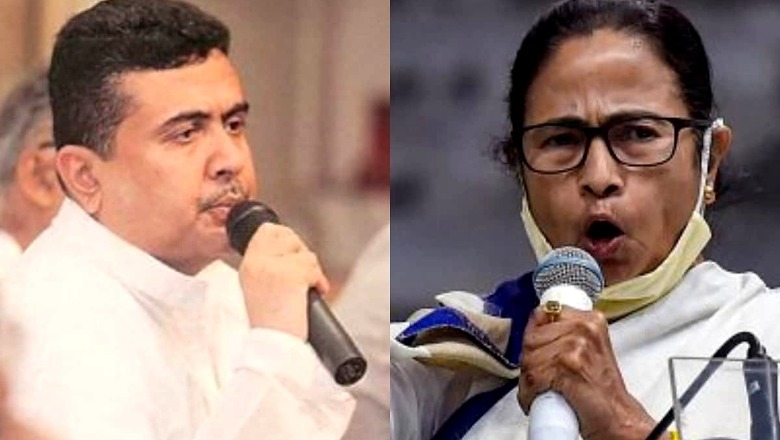
views
Is Suvendu Adhikari a prize catch for the BJP in West Bengal? Can he be the next Smriti Irani for the party? Can he influence the voting pattern in four districts, nine Lok Sabha constituencies and 63 Assembly seats? Can he decide the election result in 20 to 30 such constituencies in these four districts?
Or to sum it up, can he start the script that will end with Mamata Banerjee’s political career in a deadlock situation as she has not chosen to fight from two constituencies like Rahul Gandhi did in the 2019 Lok Sabha polls?
So, if Rahul lost his family bastion Amethi Lok Sabha constituency in Uttar Pradesh to BJP’s Smriti Irani, his win in the Wayanad constituency in Kerala came as a back-up but that option will not be available to Mamata if she loses to Suvendu in Nandigram as she has decided to focus solely on Nandigram and has chosen not to fight from Bhawanipore, her traditional seat.
These are the questions that everyone is asking, something that only the May 2 result announcement can answer but if we go by the electoral data, the turf for Suvendu against her mentor Mamata in the Nandigram Assembly constituency is going to be difficult.
Let’s see the data on assembly polls in the constituency.

If we see the vote share reflection here, the contest has been limited only to two parties but what is the clear indication here is Mamata’s visibility in her pre and post Singur and Nandigram avatars.
The Assembly elections from 1991 to 2006 in the constituency saw a minor difference of vote share between the winner and the runner-up. But post the Nandigram controversy that put Mamata’s political career on a higher pedestal, the constituency saw a huge difference between winner and runner-up votes, over 25% in 2009 and 2011 and over 40% in 2016.
That Mamata’s critics may also call a Suvendu effect, adding that Suvendu was, in fact, the real Nandigram hero. But if we see the large picture here, the ripple effect of the Nandigram vote difference goes well beyond the Suvendu catchment area.
It was, in fact, a Mamata wave all along in West Bengal post the Singur and Nandigram controversy and sure was not just limited to the catchment area of Suvendu Adkhikari and his family.
It becomes clear when we see the results of the election results on post Mamata’s 25-day fast during the Singur land controversy in 2007 and the Nandigram controversy post 2007. In 2008, TMC-Congress combine fought together and won eight civic bodies against Left Front’s five wins in the civic polls.
In 2009, Phiroza Bibi, TMC’s candidate, won the Nandigram bypoll in January with a huge difference, something that she sustained even in the 2011 Assembly election. Nandigram was one of the 13 Assembly constituencies that went for by-elections in 2009. TMC won 10 of these seats, with remarkable vote differences in each of these seats, something that went up to over 62% in one seat. TMC’s ally Congress could win only one seat while losing two.
Combine it with the 2009 Lok Sabha polls or the beginning of the end of the Left Front in West Bengal.
Alliance led by the TMC won 26 out of 42 state Lok Sabha seats. The TMC alone won 19 seats while the Congress won six. The Left Front was restricted only to 15 seats, much lower than the 35 seats won in the 2004 Lok Sabha polls.
If the 2004 Lok Sabha election had almost decimated Mamata politically in West Bengal, reducing TMC just to one seat, won by Mamata, the Singur and Nandigram stands taken by her gave her a new political life. Suvendu Adhikari, then, was nowhere in the electoral scene.
In the 2011 Assembly election, the TMC further magnified its outreach, winning 184 seats in the 294 member Assembly ending the Left Front rule. The Left Front that had ruled the State since 1977 could win just 60 seats. Also, the TMC’s vote share was 9% higher that the CPI(M)’s vote share, the main party of the Left Front.
In the 2014 Lok Sabha election, the TMC’s sweep even further increased to 34 seats, something that continued even in the 2016 Assembly polls, with Mamata’s party winning 211 seats with 45% vote share.
To sum it up, we can say Mamata Banerjee had become a vote-pulling magnate in the State.
And Suvendu Adhikari and his family saw its ripe return in the areas they electorally influence. If we see the historical trend of the Tamluk Lok Sabha constituency, Nandigram is a part of, we can say why.
Like Nandigram assembly constituency, Tamluk has also been a two party fight contest, but in spite of all the political lineage, Suvendu or any other TMC candidate was not able to win the seat before the 2009 Lok Sabha polls. Pre Nandigram controversy, Tamluk used to be a CPI(M) stronghold though Suvendu, for the first, tried his luck here in 2004.
Suvendu won the Tamluk seat in 2009 and 2014 but resigned from the constituency after he won from Nandigram Assembly seat in 2016 Assembly polls and retained it in 2019.

What if it was Mamata’s appeal that resulted in the vote conversion for the Adhkari family?
True, Suvendu was the local Nandigram hero for Mamata’s movement, but it is a fact that his later political career was also built on the positive personality that Mamata had created for herself after her anti-Left Front government stands on Singur and Nandigram controversies that had an appeal across the State.
So, now if Suvendu ditches her and fights in a seat that made her and him both, Suvendu will have to fight that appeal of Mamata as well and at a cost, that the traditional TMC voter might see him negatively now.
Read all the Latest News, Breaking News and Coronavirus News here




















Comments
0 comment